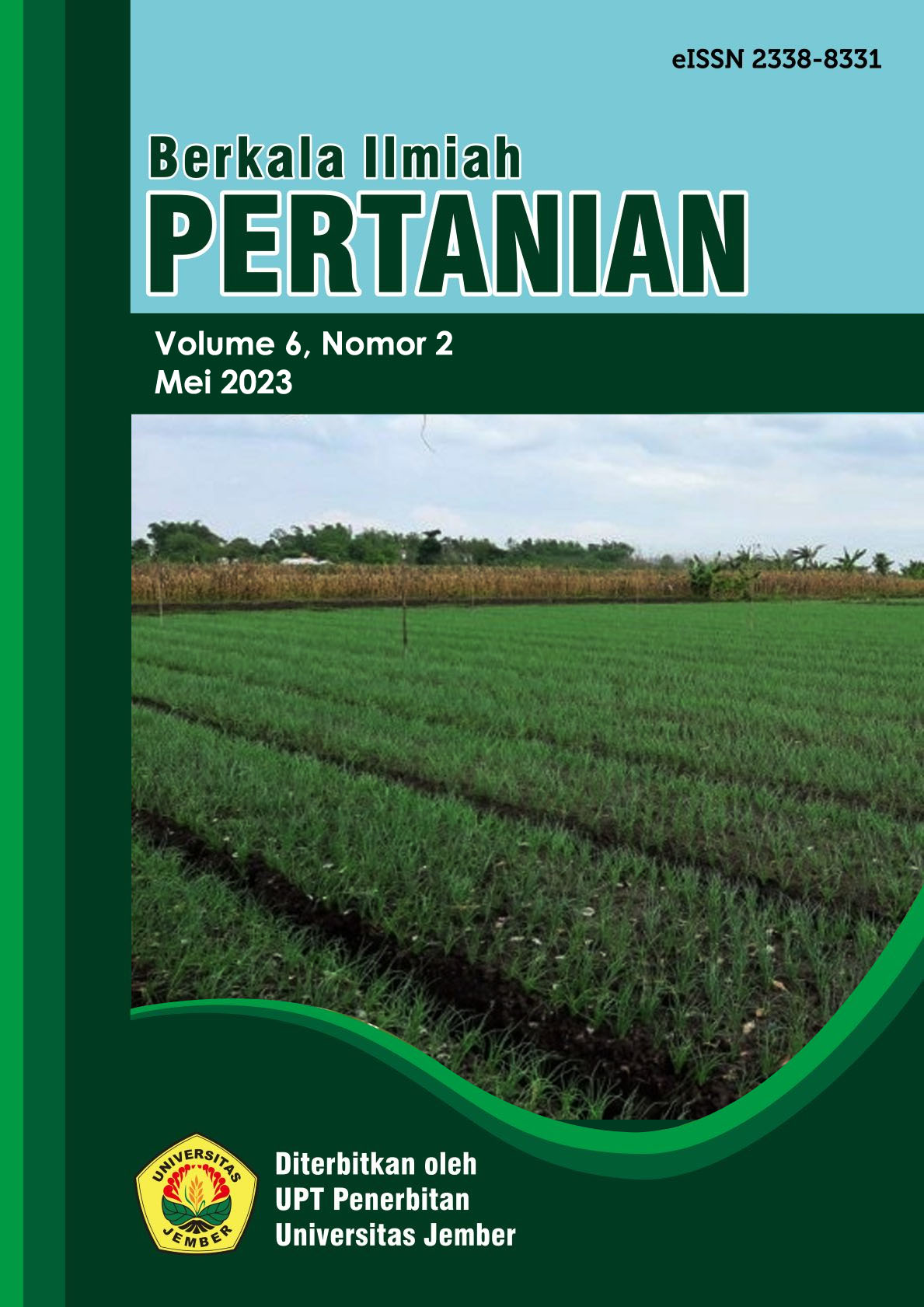Pengaruh Pemberian Vermikompos dan Pupuk KNO3 terhadap Pertumbuhan dan Hasil Tanaman Bawang Merah (Allium Ascalonicum L.) pada Lahan Kering
DOI:
https://doi.org/10.19184/bip.v6i2.38866Abstract
The use of dry land for shallot cultivation in Indonesia is still not optimal because it is considered as land that has no good potential for crop cultivation. Dry land problems include limited availability of water, low organic matter and soil nutrients, especially potassium. The purpose of this experiment was to determine the response of vermicompost and KNO3 fertilizer to the growth and yield of shallots on dry land. The experimental design used a factorial randomized block design, doses of vermicompost (5 tons/ha, 10 to/ha, and 15 tons/ha) and KNO3 fertilizer doses (0 kg/ha, 114 kg/ha, and 228 kg/ha). Parameters observed included plant height, number of leaves per hill, number of tubers per hill, tuber diameter, weight of fresh tubers per hill, weight of stored dry tubers per hill, and tuber moisture content. The results showed that the interaction between the application of 10 tons/ha of vermicompost and 114 kg/ha of KNO3 fertilizer had a significant effect on the parameters of fresh tuber weight per clump and dry tuber weight stored per clump. The single treatment of vermicompost at a dose of 15 tons/ha had a significant effect on plant height, number of leaves per hill, fresh tuber weight per hill, and dry tuber weight stored per hill. Single treatment with KNO3 fertilizer dose of 228 kg/ha had a significant effect on the weight of fresh tubers per clump and the weight of stored dry tubers per clump.
Downloads
Downloads
Published
Issue
Section
License
Authors who publish with this journal agree to the following terms:
1.Authors retain copyright and grant the journal right of first publication with the work simultaneously licensed under a Creative Commons Attribution-NonCommercial 4.0 International License that allows others to share the work with an acknowledgement of the work's authorship and initial publication in this journal.
2.Authors are able to enter into separate, additional contractual arrangements for the non-exclusive distribution of the journal's published version of the work (e.g., post it to an institutional repository or publish it in a book), with an acknowledgement of its initial publication in this journal.
3.Authors are permitted and encouraged to post their work online (e.g., in institutional repositories or on their website) prior to and during the submission process, as it can lead to productive exchanges, as well as earlier and greater citation of published work (See The Effect of Open Access).




















